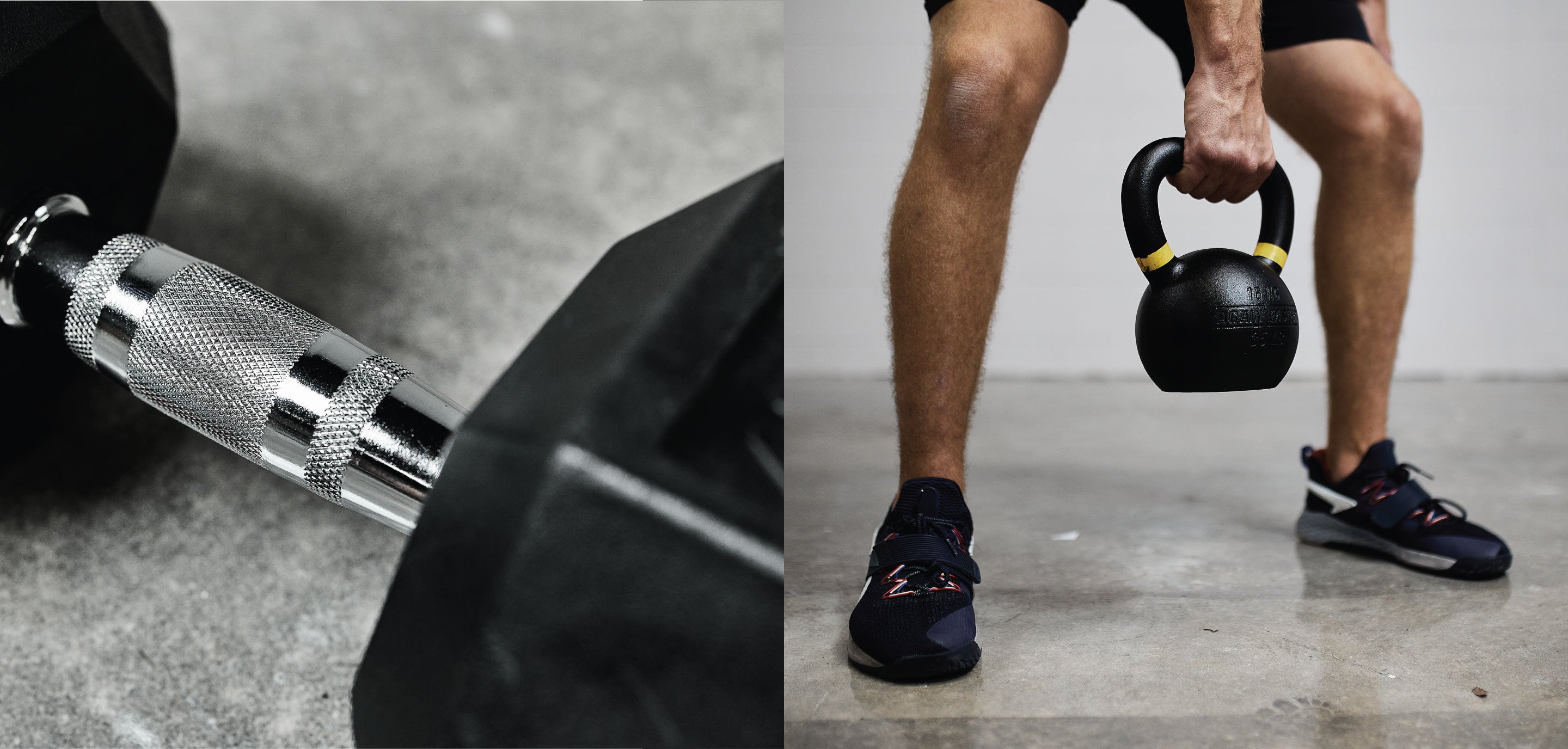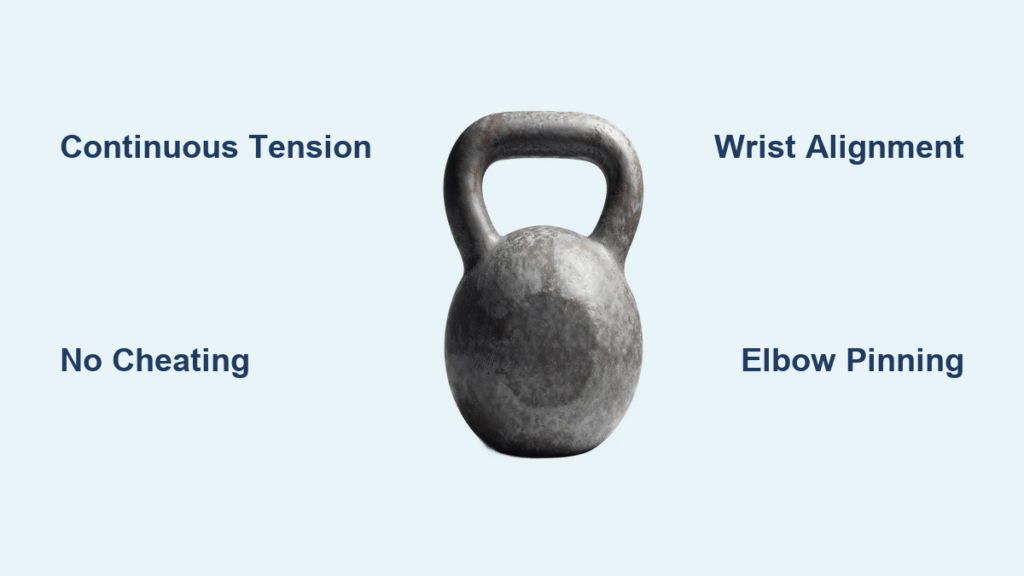Your biceps plateau when dumbbells feel too light and barbells strain your elbows. What if you could build thicker arms with one piece of equipment that keeps tension constant from start to finish? The kettlebell bicep workout delivers exactly that. Its offset mass forces your biceps to work harder through every inch of the curl, eliminating dead zones that traditional weights allow. You’ll trigger growth without joint pain—and you only need one bell. In this guide, you’ll discover how to harness the unique physics of kettlebells for arms that fill your sleeves.
Most lifters miss the critical advantage: it’s not the weight you lift, but the tension you maintain. Kettlebells excel here because the bell hangs below the handle, pulling your forearm backward even at peak contraction. This extends time-under-tension by 30-40% compared to dumbbell curls. Plus, the anti-cheat design prevents momentum, isolating the biceps like a preacher bench—but with added grip and forearm development. Ready to unlock bigger arms? Let’s break down exactly how to do it.
Why Kettlebells Build Bigger Biceps Faster

No More Dead Zones at the Top of Your Curl
Dumbbells let you rest at lockout when your elbows fully extend. Kettlebells eliminate this escape route. Because the bell hangs below the handle, it creates perpetual downward pull that forces your biceps to fight even at full contraction. This continuous tension extends time-under-tension by 30-40%, maximizing micro-tears in muscle fibers—especially critical when reps stay in the 5-8 range for fast-twitch hypertrophy. You’ll feel your biceps burning through the entire motion, not just the middle portion.
Why You Can’t Cheat a Kettlebell Curl
Swing the weight or use shoulder momentum, and the kettlebell immediately slams into your forearm. This instant feedback loop locks elbows in place and quiets shoulder movement, isolating the biceps better than any machine. The unstable load also recruits stabilizers in your upper traps and rhomboids, turning a simple curl into a full-arm builder. You’ll activate muscle fibers that dumbbells never reach—particularly the long head of the biceps for that coveted peak.
How the Handle Thickens Arms from Wrist to Shoulder
Standard kettlebell handles (33-35 mm thick) function as built-in fat-grip attachments. Every curl irradiates tension from your fingers up through the forearm into the biceps. This dual stimulus thickens your entire arm structure, not just the biceps peak. Stronger grip directly translates to heavier loads over time, creating a growth cycle where improved neuromuscular efficiency lets you recruit more muscle fibers per rep.
4 Must-Do Kettlebell Bicep Exercises
Standing Kettlebell Curl: The Growth Foundation
Setup: Stand tall, feet hip-width, handles resting firmly in mid-upper palms (not fingers).
Execution: Curl while pinning elbows to ribs—no forward drift. Stop 10° short of elbow lockout to maintain tension.
Pro Tip: Squeeze glutes to prevent lumbar extension.
Loading: 3-4 sets × 5-8 reps with 90-120s rest. Start with 16-24 kg (men) or 8-12 kg (women). Progress when you hit 8 reps with RIR 2.
Incline Kettlebell Curl: The Hypertrophy Triad
Setup: Set bench to 45°, back flat against pad.
Why It Works: Combines loaded stretch at the bottom with peak tension at the top—triggering all three hypertrophy pathways simultaneously.
Protocol: Cycle through heavy (4-6 reps), moderate (8-10), and light (12-15) sets in one session. Use 12-20 kg (men) or 6-10 kg (women). The incline position uniquely stresses the long head for wider arms.
Hammer Curl: Build Baseball Bat Thickness
Grip: Neutral position (thumbs up) to target brachialis and brachioradialis.
Key Insight: Use only 50% of your standard curl weight—the longer lever arm increases demand.
Execution: Keep elbows glued to ribs, wrists neutral. No shoulder movement.
Volume: 2-3 sets × 8-15 reps. This variation adds crucial 3D thickness to your entire arm structure.
Reverse Bottoms-Up Curl: The Form Fixer
Grip: Hold bell upside-down by the horns, wrist perfectly straight.
Challenge: Any wrist deviation dumps the bell—forcing strict technique.
Uses:
– Technique primer: 2 × 5-8 reps before main lifts
– Finisher: 1-2 × max reps in 60s with 30s rest between rounds
This variation locks in wrist alignment while maximizing biceps activation in the mid-range.
How to Program Your Kettlebell Arm Day

Beginner Template (2x Weekly)
Start with just two exercises twice per week. Perform:
– Standing Kettlebell Curl: 3 × 12-15 reps
– Hammer Curl: 3 × 15-20 reps
Rest 90-120s between sets. Focus on perfect form over weight. After three weeks, add incline curls. Only have one kettlebell? Perform all exercises unilaterally, resting 30-45 seconds between arms to maintain conditioning.
Advanced 28-Day Growth Protocol
Perform 100 goblet curls daily with a submaximal weight (16 kg men / 8-12 kg women). Track these changes:
– +0.6 inch arm circumference in 4 weeks
– +10 kg barbell row strength from improved grip
– +30 seconds farmer’s carry duration
The secret? Daily submaximal practice boosts neuromuscular efficiency without excessive soreness—making every curl more effective.
Avoid These 3 Kettlebell Curl Mistakes

Wrist Extension: The Silent Joint Killer
Problem: Letting knuckles tilt backward dumps load into connective tissue.
Visual Cue: Watch for the bell pulling your hand forward at the top.
Fix: Maintain vertical knuckles throughout—imagine pouring water from the bell without spilling.
Shoulder Hike: When Traps Steal Your Gains
Problem: Shoulders creeping toward ears disengages biceps.
Visual Cue: Trap muscles bulging during curls.
Fix: Pull shoulder blades down and back before first rep. Hold this position like you’re sliding a credit card between your shoulder and ear.
Elbow Drift: How Front Delts Hijack Your Curl
Problem: Elbows swinging forward recruits front delts, reducing biceps activation.
Visual Cue: Elbows moving ahead of your torso.
Fix: Pin elbows to ribs using the “tennis ball squeeze” cue—imagine crushing a ball between elbow and ribcage.
The 5-Minute Kettlebell Arm Finisher
Cap your session with this brutal finisher:
1. Grab a light bell (8-12 kg) held bottoms-up
2. Perform max reps in 60 seconds
3. Rest 30 seconds
4. Repeat 2-3 rounds
This maximizes metabolic stress and pump while cementing perfect wrist alignment. Expect serious forearm burn—but it’s the catalyst for next-day growth.
Kettlebells transform bicep training from isolated fluff into full-arm development. The offset tension builds bigger peaks, thicker forearms, and bulletproof elbows—all with one bell. Start with Standing and Incline Curls twice weekly, fix your wrist and elbow positioning, and add the Reverse Bottoms-Up Curl as a finisher. In 28 days, measure your arms—you’ll see the difference. Now grab your kettlebell and make every curl count.




